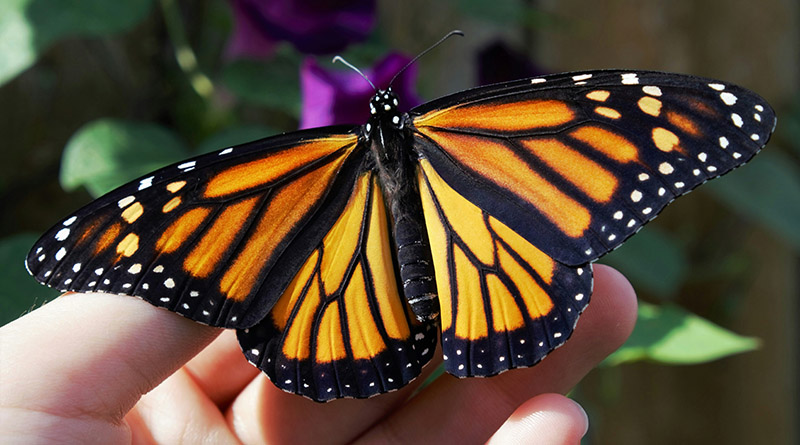
 At times, walking across the Texas A&M University–Central Texas campus can be a little surreal. Wandering past one of the butterfly gardens on campus might find you navigating waves of orange and black as Monarch butterflies swarm your every step. The university is uniquely positioned to view up close and personal, one of nature’s unique occurrences.
At times, walking across the Texas A&M University–Central Texas campus can be a little surreal. Wandering past one of the butterfly gardens on campus might find you navigating waves of orange and black as Monarch butterflies swarm your every step. The university is uniquely positioned to view up close and personal, one of nature’s unique occurrences.
Monarchs are, in fact, migratory insects. Each fall, generally around late September to mid-October, they make their way from as far north as Canada down into Mexico, crossing through Central Texas.
Head of the biology department at A&M–Central Texas, Laura Weiser Erlandson, Ph.D., is a Monarch enthusiast and explained that all Monarchs winter in either Mexico or California. The migration provides a key learning opportunity for biology students.
“The butterflies east of the Rocky Mountains all funnel right over Killeen — this basic area,” Erlandson said. “We are really in a prime spot to look at their population numbers.”
Each fall, students arm themselves with butterfly nets and tagging paraphernalia and set out across campus. Monarchs are now on the endangered species list and tracking migration and population is an important step in trying to rebuild their numbers. Under Dr. Erlandson’s guidance, students learn how to capture the insects without putting them through undue stress. They tag them and document the capture, uploading the information to a national database.
“We have these little stickers that we put on their wings,” she said. “The stickers have a number on it. We record the number then let them go.”
If students capture a butterfly that has already been tagged, they will look it up in the national database maintained by Monarch Watch. The tagging system allows biologists and conservationists to track a Monarch’s journey.
Along with catching and tagging, the butterflies, Erlandson said they also look for a virus that is harmful to the insects. Butterflies carry the spores and as they flap their wings, the spores fall onto the areas where the butterflies lay their eggs. When the eggs hatch, the caterpillars eat the spores which cause deformation of the wings.
“When the caterpillars pupate and they come out of the chrysalis, they can’t expand their wings, so they can’t fly,” Erlandson said. “That parasite is becoming a problem.”
While the parasite persists, Erlandson said it is only a secondary issue to what is truly plaguing the butterflies.
“The biggest threat right now is loss of habitat,” she said. “Deforestation, agriculture, urban spawl … that’s destroying a lot of habitat.”
Monarchs are pollinators, playing important rolls in the cultivation of much of the food humans eat such as cabbage and other vegetables. They lay their eggs on milkweed. When the eggs hatch, the caterpillars eat the milkweed.
Not only are human processes such as agricultural practices destroying the habitat, but last year’s drought conditions also greatly affected habitat areas, such as those on the A&M–Central Texas campus. Dr. Erlandson explained that the university has three butterfly habitat gardens. Two small beds are located on the second-floor terrace in Warrior Hall. A third larger garden is located north of the parking lots. Last year, due to drought conditions and the resulting water restrictions, Erlandson said one of the gardens completely “fried” and a break in the irrigation system destroyed another habitat bed. She is hoping for better results this year as students have led in replanting the gardens.
As research continues on the endangered species, Erlandson said there are valuable lessons her students learn from the experience.
“It gives them an appreciation of the biodiversity and the importance of biodiversity,” she said. “Every species is important in its own way. We talk about the Monarchs being important pollinators, being important food for other animals, being important in creating some of our food through the pollination that they do.
“Students also gain important skills in conservation biology. They learn how to create habitats. How to plant and maintain them. They learn what kind of plants need to be in there, how many of each, what kind of varieties in order to not only conserve something like the Monarch butterfly, but it’s also something they can carry through to other species.”
And as the habitats return to their full glory on campus, Dr. Erlandson is hoping people from all across the region will visit campus and take advantage of the opportunity to see the beauty of the butterfly migration.
